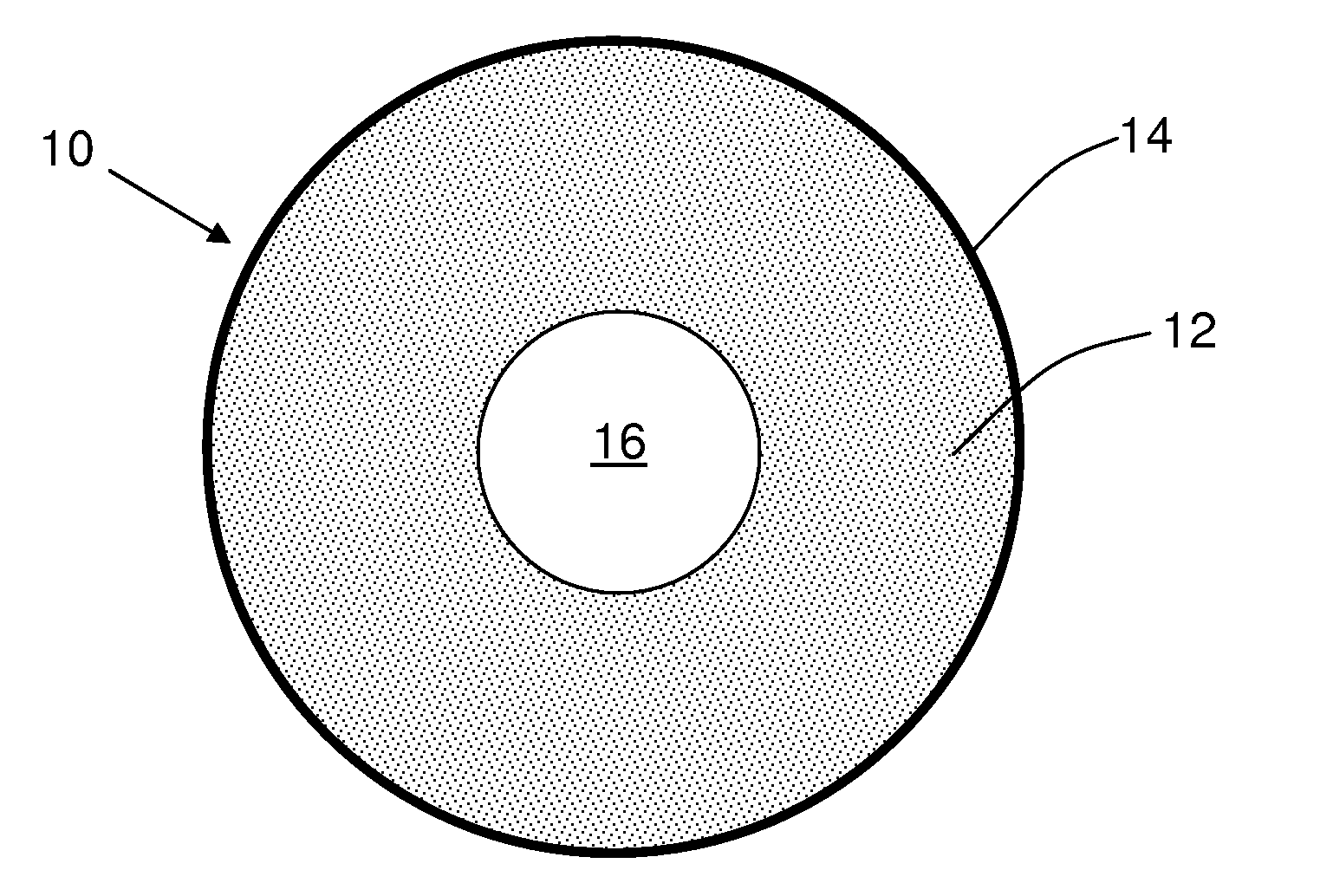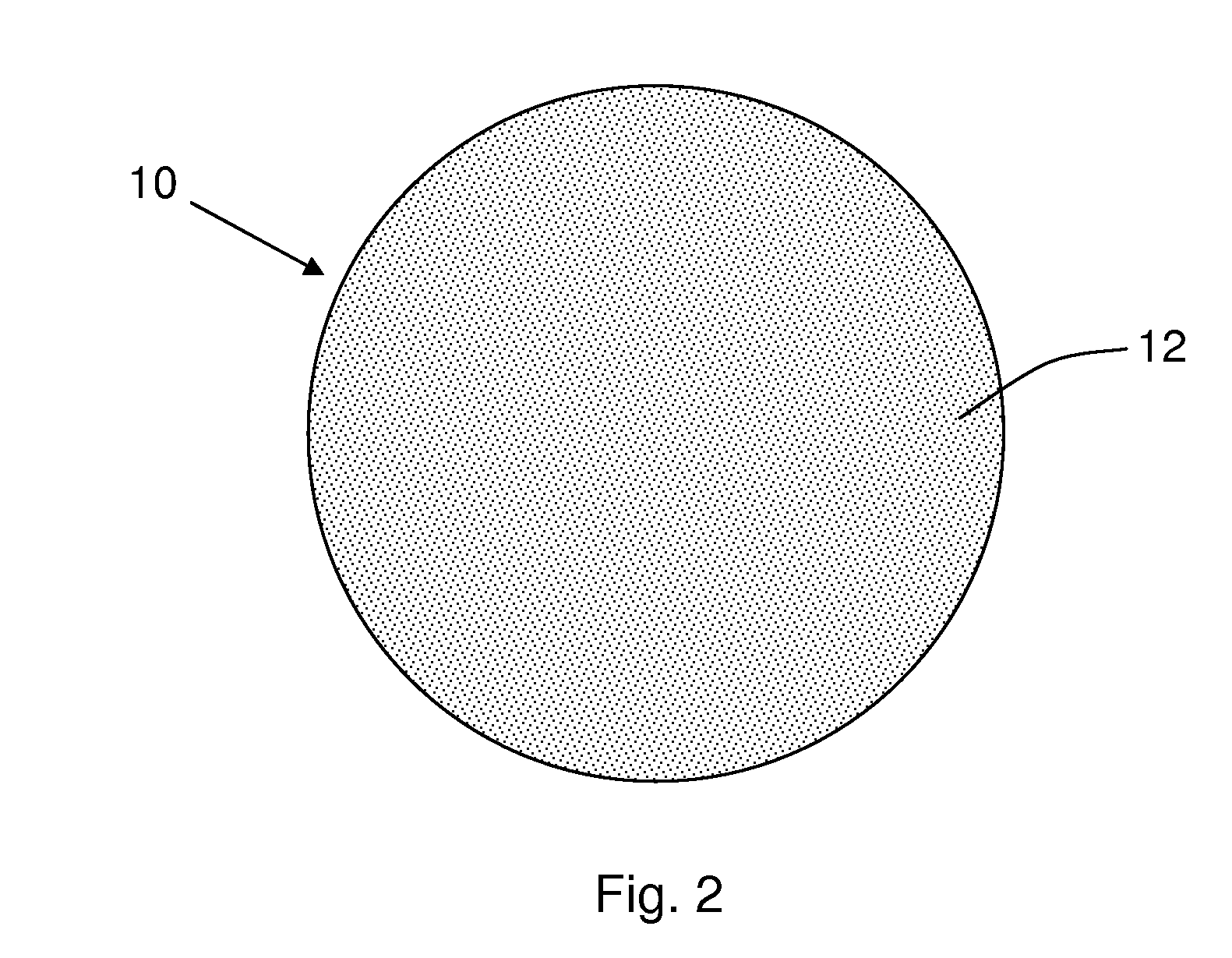Multiuse, solid cleaning device and composition
a technology of solid cleaning and composition, applied in the direction of detergent compounding agents, dissolving, inorganic non-surface active detergent compositions, etc., can solve the problems of soap molecules not truly soluble in water, insoluble salts (precipitates), additives that take much longer to biodegrade, etc., and achieve the effect of effective drainage of water
- Summary
- Abstract
- Description
- Claims
- Application Information
AI Technical Summary
Benefits of technology
Problems solved by technology
Method used
Image
Examples
example 1
[0101] A cleaning agent composition was prepared by mixing the dry ingredients listed in Table 1A with the wet ingredients listed in Table 1B:
TABLE 1ADry IngredientsWeight (g)Weight PercentSodium perborate monohydrate230 g45.5Optical brightener 5 g1.0Anti-redeposition agent 5 g1.0Zeolite 15 g3.0Fragrance 22 g2.2Total:267 g52.7
[0102]
TABLE 1BWet IngredientsWeight (g)Weight PercentPotassium Silicate201 g39.8Sodium hydroxide 9 g1.8Surfactant 29 g5.7Total:239 g47.3
[0103] After the foregoing ingredients are mixed, the mixture is poured into a mold and allowed to cure and solidify.
example 2
[0104] A multiuse laundry cleaning device in a solid state was prepared by molding cleaning agent having the formula of Example 1 into a spherical ball. The spherical ball was placed inside a washing machine tub and subjected to repeated wash cycles in the washing machine tub. Additional multiuse laundry cleaning devices were prepared and tested in several different types of commercially available washing machines. Wash cycles ranged from delicate to regular to heavy duty, and different water temperature settings were used. The multiuse laundry cleaning device remained in the washing machine tub for both wash and rinse cycles. After the cleaning cycles were complete, the cleaning device was removed from the washing machine and weighed to determine the quantity of cleaning agent that was dissolved during the preceding wash cycle. Representative results from two tests are reported in Tables 2A and 2B.
TABLE 2ACleaningCleaningWashDeviceAgentCycleWeight (g)Released042213942823365832835...
PUM
| Property | Measurement | Unit |
|---|---|---|
| diameter | aaaaa | aaaaa |
| diameter | aaaaa | aaaaa |
| diameter | aaaaa | aaaaa |
Abstract
Description
Claims
Application Information
 Login to View More
Login to View More - R&D
- Intellectual Property
- Life Sciences
- Materials
- Tech Scout
- Unparalleled Data Quality
- Higher Quality Content
- 60% Fewer Hallucinations
Browse by: Latest US Patents, China's latest patents, Technical Efficacy Thesaurus, Application Domain, Technology Topic, Popular Technical Reports.
© 2025 PatSnap. All rights reserved.Legal|Privacy policy|Modern Slavery Act Transparency Statement|Sitemap|About US| Contact US: help@patsnap.com



